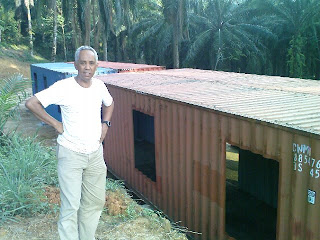Leading soil expert says biological farming is the future
Growers who are prepared to step off the “chemical treadmill” and embrace biological agriculture can look forward to a profitable and fertile future.
That is the view of Dr Arden Andersen, a world authority on biological farming, who
comes to New Zealand this February to hold a series of workshops on soil health.
Andersen highlights research from the US and UK that shows food nutrient levels
in the developed world are deteriorating. Dr Andersen, who combines work as a
practising GP and international soil consultant, draws a clear link between poor soil quality, lack of nutrients in our food and resultant health issues. He advocates a “best of both worlds” approach to improving the levels of nutrients in
our food by adopting elements from both conventional and organic farming methods.
Biological farming combines chemistry, physics, biology and microbiology with sound farm management practices. It addresses and solves weed, disease and insect problems at their root causes, rather than merely masking the symptoms with
chemicals. Dr Andersen dismisses the conventional assertion that mass production of food and fibre cannot be accomplished without the extensive use of synthetic chemicals. He says growers can clean up their act without compromising margins.
is a way of thinking and doing that helps farmers to gradually step off the treadmill
of agricultural chemicals and onto a path of managing soils, crops and animals in a
profitable and sustainable way,” says Dr Andersen.
“One mistake that people make, seemingly more often than anything else today, is relying upon tests, equipment and technology to make decisions for them rather than using their own deductive understanding, observation skills, and intuition.” |
| Dr Andersen says biological agriculture will preserve the productive capacity of our |
soils. It will also provide the residue free, high nutrition food, produced in an
environmentally friendly manner that the market is increasingly demanding.
uring his New Zealand seminars, Dr Andersen will outline how to grow such
nutrient-dense produce while increasing profit per unit of input. He will discuss
tackling weeds, diseases and insect pests appropriately and safely, and ways of
rehabilitating the environment including building carbon stores in the soil as humus.
Dr Andersen asserts that growers must get back to the realisation that they are
growing food that will impact on the health of the environment in which all humankind, animals and plants live; they must take responsibility for the
consequences of their actions on the lives of future generations.
utrition is the building block of every body, organ, tissue and cell. It is the
foundation of the immune and repair system; the absolute core issue regarding
disease, birth defects, life expectance and quality of life,” he says.
“Heart disease, stroke, Parkinson’s, Alzheimer’s, diabetes, obesity and cancer are more prevalent than ever and increasing every year. Children are the age group with the fastest increase in cancer rate. There are literally thousands of scientific journal articles linking all these diseases to nutrition.”

 will be ready to share his hospitality anytime in his Homestay bed&breakfast. There are 3 rooms charging at Euro 25 for single and Euro 45 for Double. Anyway there are also long term stay as there are more than 200 companies around Brink3. Historical attraction may be of your interest
will be ready to share his hospitality anytime in his Homestay bed&breakfast. There are 3 rooms charging at Euro 25 for single and Euro 45 for Double. Anyway there are also long term stay as there are more than 200 companies around Brink3. Historical attraction may be of your interest






 IS AT PLKN- KERLING AND WILL BE ADMITTED INTO UNIKL LUMUT FOR MARINE ENGINEERING, INSYALLAH, ADAM IN FORM 5 AT THE SMT -GOMBAK IN ELECTRONIC & ELECTRICAL VOCATIONAL AND HE IS IN THE HOSTEL TOO.
IS AT PLKN- KERLING AND WILL BE ADMITTED INTO UNIKL LUMUT FOR MARINE ENGINEERING, INSYALLAH, ADAM IN FORM 5 AT THE SMT -GOMBAK IN ELECTRONIC & ELECTRICAL VOCATIONAL AND HE IS IN THE HOSTEL TOO.






